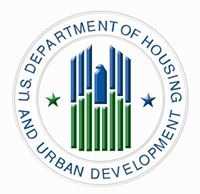WASHINGTON, D.C. – September 22, 2014 – (RealEstateRama) — U.S. Department of Housing and Urban Development (HUD) Secretary Julián Castro joined U.S. Department of Agriculture Secretary Tom Vilsack, U.S. Department of Transportation Secretary Anthony Foxx, and Education Secretary Arne Duncan to announce a competition to designate a new round of Promise Zones. These Promise Zones are part of the President’s plan to create a new pathway to the middle class by partnering with local communities and businesses to create jobs, increase economic security, improve educational opportunities, and reduce violent crime.
Urban, rural, and tribal communities nationwide will be invited to put forward a plan to partner with local business and community leaders to make evidence-based investments that reward hard work and expand opportunity. In exchange, these designees will receive priority access to federal investments that further their strategic plans, federal staff on the ground to help them implement their goals, and five full-time AmeriCorps VISTA members to recruit and manage volunteers and strengthen the capacity of the Promise Zone initiatives.
“As a former mayor of an urban Promise Zone community, I have a unique appreciation for the talent, passion and the vision that local leaders offer when working to turn their communities around,” said HUD Secretary Julián Castro. “Promise Zones are about giving folks who have been underserved for far too long the opportunity to build stronger neighborhoods and more prosperous lives. At HUD, we’re honored to give other communities the opportunity to transform their futures so this work can continue across the country.”
“The Promise Zones initiative allows us to work directly with local leaders and organizations to meet a community’s specific needs,” said Agriculture Secretary Tom Vilsack. “In the current Promise Zones, especially in rural and tribal areas, we are seeing how effective it can be when we work in a coordinated way to address economic and social challenges. We’ve seen economic recovery strategies like this create jobs and opportunity through USDA’s community-based StrikeForce Initiative and Promise Zones build on this success.”
“As a former mayor, I know the difference that can be made when federal agencies work together to cut through red tape and deliver strategic solutions that address a community’s needs,” said Transportation Secretary Anthony Foxx. “The Department of Transportation is proud to work alongside other agencies to make sure communities not only offer good homes, thriving businesses and a clean environment, but an efficient transportation system so its people can enjoy them all, too.”
Education Secretary Arne Duncan added, “At the heart of every strong community is a great school, but schools can’t do it alone – it takes the whole community to help improve outcomes for students in school and in life. Promise Zones create real pathways to success for families in our most impoverished communities across the country by attracting private investment, increasing affordable housing, improving educational opportunities and assisting local leaders in cutting through red tape. I am excited to join our interagency partners in announcing this new opportunity for communities to become a Promise Zone.”
Each Promise Zone selected will have demonstrated that local leaders, business leaders, state, tribal and local officials; faith-based and non-profit organizations; children and parents are collaborating effectively to ensure that hard work leads to a decent living for every American, in every community.
In 2009, after a generation of sometimes counterproductive and often contradictory federal engagement that was creating obstacles to greater shared prosperity, local communities across the country demanded a more effective and responsive federal government partner to create new pathways to the middle class. To meet this demand, the Obama Administration adopted a variety of unprecedented place-based efforts to promote economic opportunity and accelerate economic growth by explicitly connecting key federal programs that support such growth, such as education, housing, economic development, and infrastructure, with locally-devised strategies for broadly shared regional growth.
In January of this year, President Obama announced the first five Promise Zones: San Antonio, TX, Los Angeles, CA, Philadelphia, PA, Southeastern Kentucky Highlands and the Choctaw Nation of Oklahoma. The work being done in these communities is already helping to move the needle in key areas. For example, graduation rates have reached 90 percent in the San Antonio Promise Zone; 2,000 kids in Los Angeles were able to find a summer job through a youth employment initiative; 900 unemployed people in Southeastern Kentucky have been connected to a job; and over 700 households and 50 businesses in remote southeast Oklahoma will soon have access to clean, safe drinking water for the first time. Today’s announcement of a new Promise Zone competition will help bring similar success to high-poverty communities across the country.
Any community meeting the qualifying criteria can apply for a designation, regardless of whether it has a previous federal grant. HUD and USDA will designate at least 8 Promise Zones across urban, rural and tribal communities. The deadline for submitting Promise Zone applications is November 21, 2014.
HUD in close collaboration with USDA will convene three distinct webcasts for urban, rural, and tribal to discuss the second round of the Promise Zone Initiative with interested communities.
Dates and times are as follows:
Tribal Webcast September 29th 1:00pm – 2:00pm
Rural Webcast September 29th 3:00pm – 4:00pm
Urban Webcast October 1, 2014 3:00pm – 4:00pm
More information about the Promise Zone initiative and how to apply is available at: www.hud.gov/promisezones.
###
HUD’s mission is to create strong, sustainable, inclusive communities and quality affordable homes for all.
HUD is working to strengthen the housing market to bolster the economy and protect consumers; meet the
need for quality affordable rental homes: utilize housing as a platform for improving quality of life; build
inclusive and sustainable communities free from discrimination; and transform the way HUD does business.
More information about HUD and its programs is available on the Internet at www.hud.gov and
http://espanol.hud.gov. You can also follow HUD on twitter @HUDGov, on facebook at
www.facebook.com/HUD, or sign up for news alerts on HUD’s Email List.











